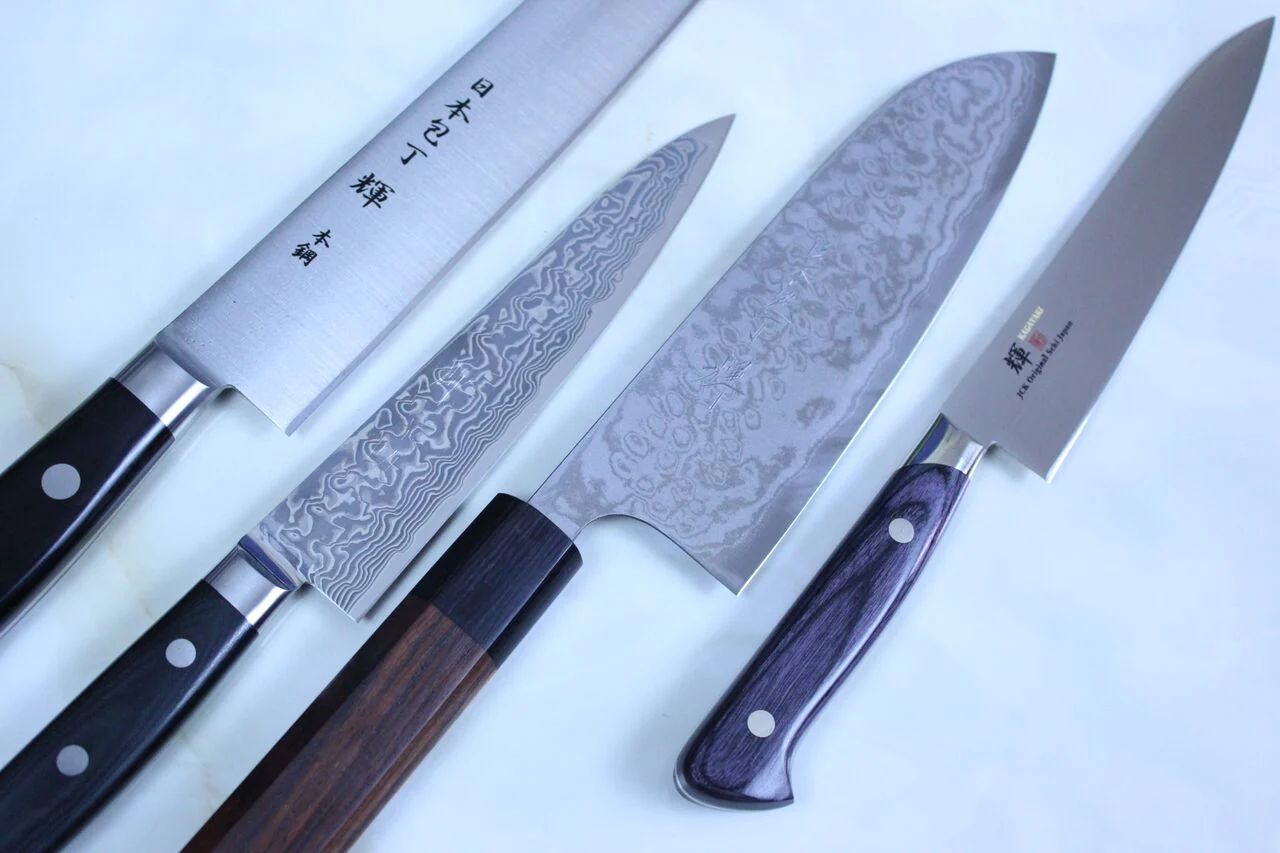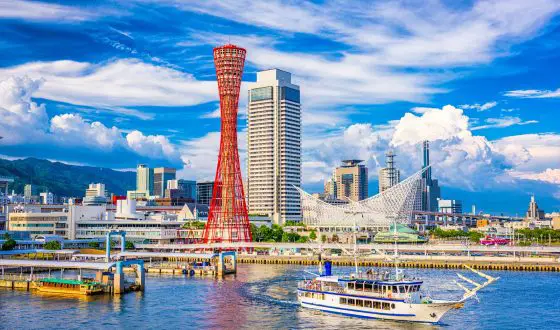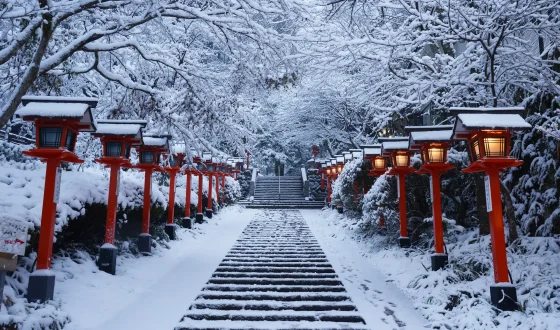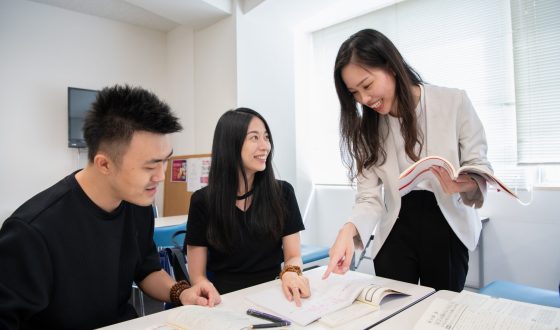Top 9 Best Japanese Knife Brands: Reviewed by Experts
Are you in the market for a Japanese knife that will stay sharp and give you precise cuts? It can be hard to navigate the endless sea of different types, styles, and brands of knives made all around Japan. But don’t worry! We’re here to help you find just the right one by giving our take on some of the best Japanese knife brands available.
In this article, we’ll review and compare several renowned companies known for their quality craftsmanship and unique designs so that the next time you buy a Japanese blade, it will be an informed decision. So let us get started on what promises to be an interesting journey into the realm of top-tier blades from Japan!
The Origins of Japanese Knife: Heian, Edo, and Meiji Eras
The genesis of Japanese knives can be traced back to the Heian period in Japan (approximately 794 to 1185 AD). The term “Heian” itself signifies peace in Japanese. During this era, Japan witnessed a profound cultural flourishing. Trade interactions with China and the Korean Peninsula ushered in fresh ideas spanning politics, art, religion, architecture, and more. Techniques in blade smithing and metal forging from China and Korea melded with local resources, giving rise to the art of Japanese sword-making.
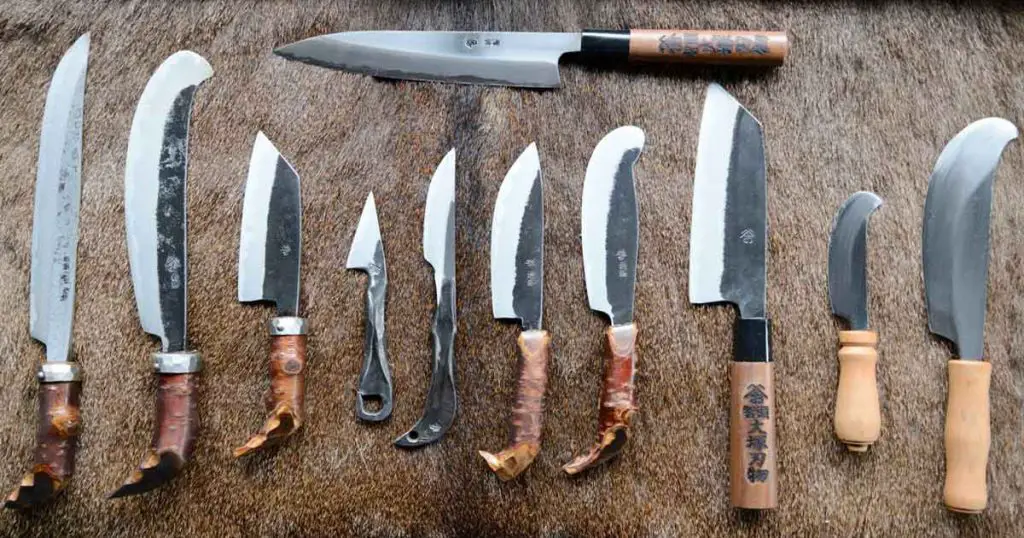
The Origins of Japanese Knife (Source: Internet)
The Evolution: Edo Period (1603 to 1867)
The artistry of sword-making and knife-craft continued to advance, culminating in the Edo period. During this time, several distinct kitchen knives made their debut. Among these, the Deba (a knife closely associated with fish butchery), Yanagiba (Sashimi knives), and Nakiri (vegetable knives) became essential tools in numerous households and culinary establishments. The burgeoning preference for red meat consumption from Western influences even gave birth to a new knife – the Gyuto (pronounced as “guee-oh-toh”), translating to “meat knife” and now recognized as the chef’s Western-style knife.
The Catalyst: Meiji Reconstruction
The pivotal turning point for the proliferation of Japanese knives and artisans can be attributed to the Meiji Reconstruction. The shogunate political system in Japan yielded to the rise of an imperial nation. Consequently, samurai swords were declared illegal weapons for personal possession, marking the decline of the samurai as an occupation. Their roles were supplanted by a centralized government and a modern police force. This shift posed a challenge for blade smiths as the demand for samurai swords plummeted. It prompted these traditional craftsmen, well-versed in the art of weapon forging, to adapt their skills to knife-making. Thus, sword makers transformed into knife makers.
Back to the Present
The modern culture of knife-making in Japan has transcended geographical boundaries, with a focal point in a small city inhabited by fewer than 90,000 people – Seki City, Japan. Seki City has been a renowned center for high-end swords and knives since the 13th century, owing to its rich heritage and abundant natural resources. While a few other cities in Japan have also carved out niches in the fine craft of Japanese knife-making, Seki remains a prominent hub. Now, let’s delve into a review of the top Japanese knife brands available for purchase.
Top 9 Best Japanese Knife Brands
1. MAC Knife
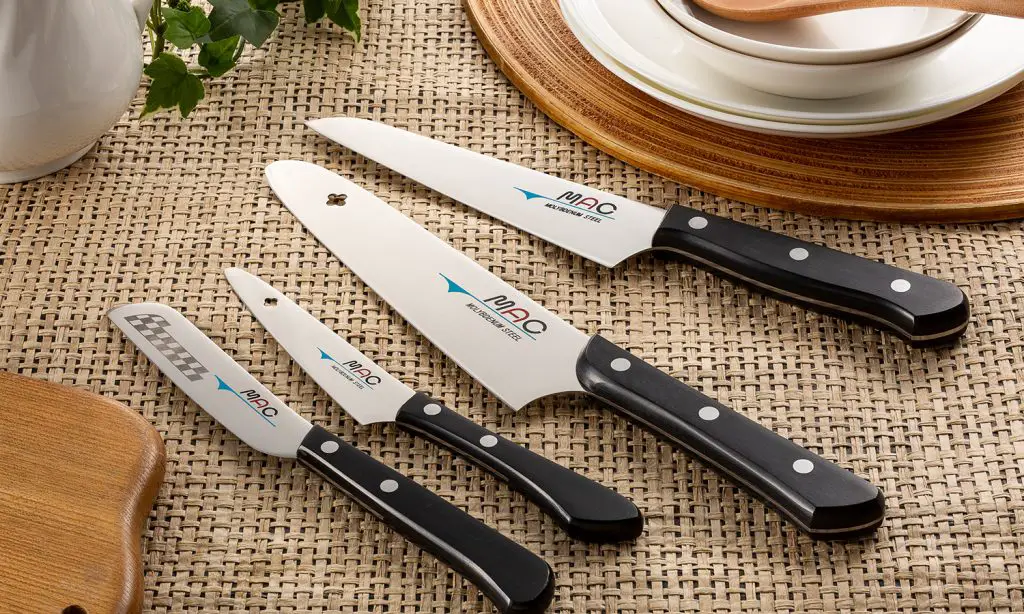
MAC Knife (Source: Internet)
Mac knives are crafted from premium Japanese Molybdenum high-carbon steel, featuring a 15-degree even “V” edge for an effortlessly sharp blade that remains easy to upkeep. With a history dating back to 1964, Mac knives have maintained their reputation as the preferred choice of numerous professional chefs.
| Product lines | Price |
| MAC Chef’s Knives | $60 – $200 |
| MAC Santoku Knives | $70 – $150 |
| MAC Paring Knives | $30 – $40 |
| MAC Utility Knives | $40 – $80 |
| MAC Bread Knives | $60 – $150 |
| MAC Boning Knives | $60 – $120 |
| MAC Slicing and Carving Knives | $70 -$150 |
| MAC Nakiri and Usuba Knives | $70 -$150 |
2. Global
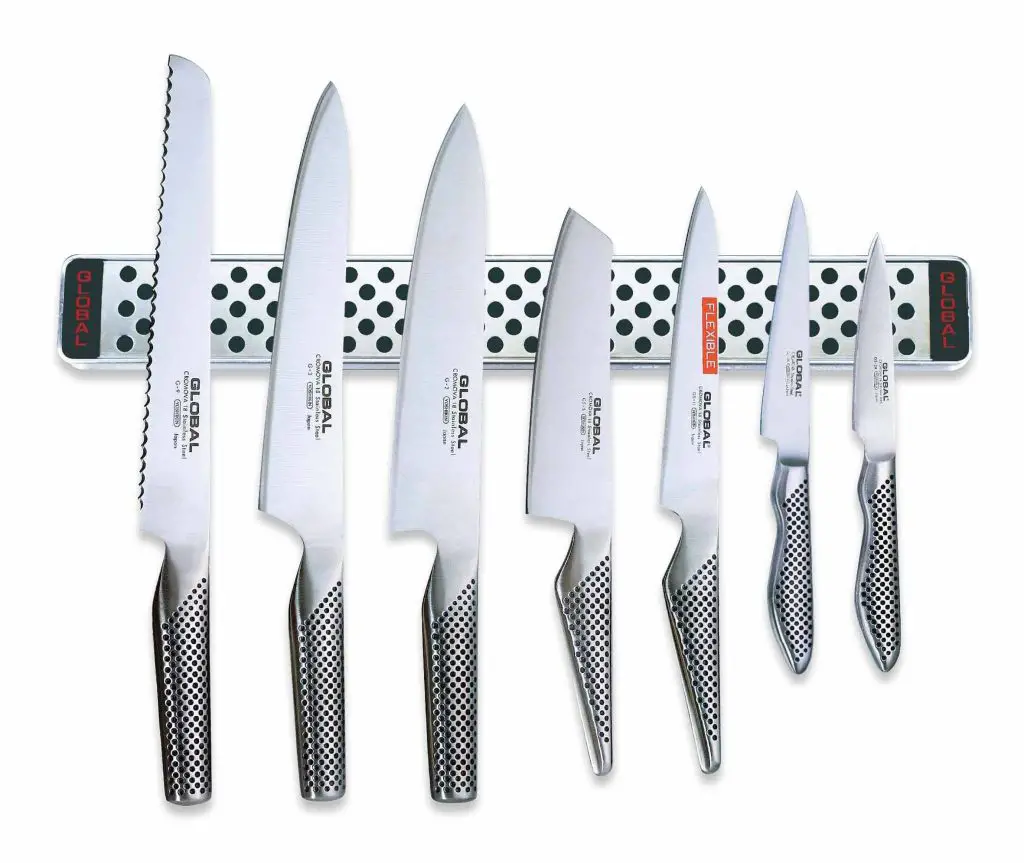
Global Knifes (Source: Internet)
Global Knives stand out as a highly respected brand in both professional and home kitchens alike. Combining affordable pricing with enduring design and exceptional craftsmanship, they represent a top-tier quality brand. Their knives feature patented Chromova stainless steel, a unique blend of chrome, molybdenum, and vanadium, ensuring resistance to staining, rust, and chipping. With a 40-year history of knife-making, Global’s dedicated team of artisans and leadership ensures the brand’s enduring legacy for years to come.
| Product lines | Price |
| Global Classic | $80 to $200 |
| Global G Series | $80 to $200 |
| Global Sai | $150 to $300 |
| Global Ni | $100 and $250 |
| Global GF Series | $50 to $100 |
| Global Slicing and Carving Knives | $100 to $200 |
| Global Santoku Knives | $80 and $150 |
3. Misono
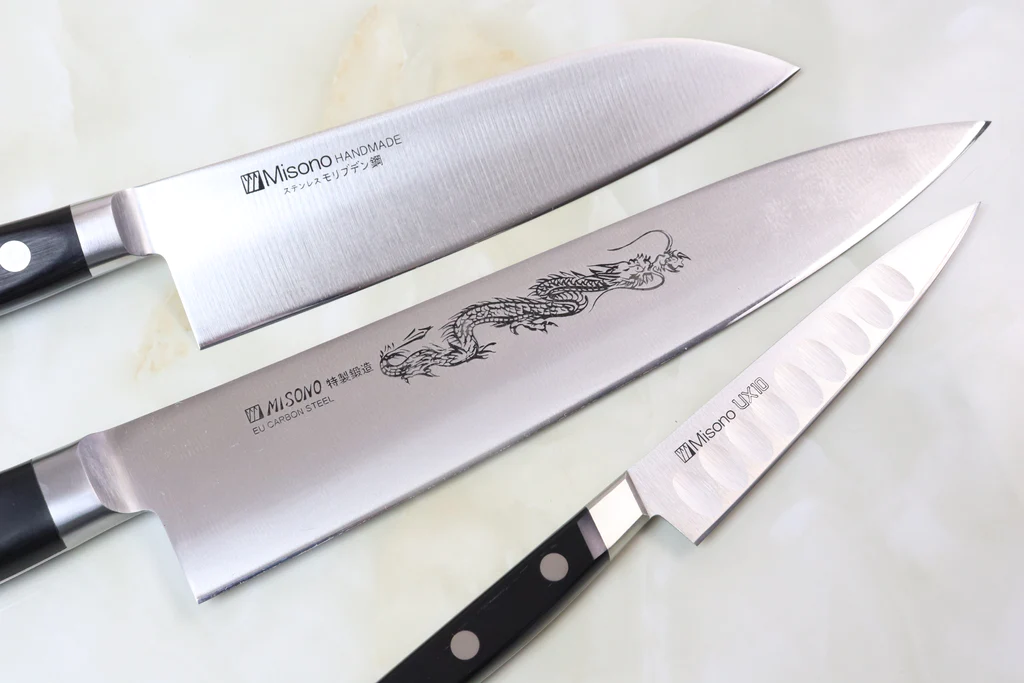
Misono Knifes (Source: Internet)
Misono, a distinguished manufacturer, boasts an illustrious heritage spanning over seven and a half centuries in crafting kitchen knives. Situated in Seki, Japan, their workshop harmoniously melds cutting-edge technology with time-honored forging traditions. Misono is particularly renowned for its creation of Western-style chef’s knives, featuring a 70/30 edge geometry that enhances their cutting precision and aggressiveness.
Among their exceptional product lines, the Molybdenum 440 series is a remarkable choice, offering an excellent balance of affordability and quality for paring knives. For those seeking edge retention, craftsmanship, and precision, the UX-10 line from Misono reigns supreme.
| Product lines | Price |
| Molybdenum 440 Line | $50 to $150 |
| UX-10 Line | $150 to $300 |
| Swedish Carbon Steel Line | $100 to $300 |
4. Masamoto Sohonten

Masamoto Sohonten Knifes (Source: Internet)
Dating back to 1845, this cutlery manufacturer’s origins are deeply rooted in history. Across six generations, the brand remains steadfast in preserving the very techniques pioneered by its founder, Minosuke Matsuzawa. Renowned for its commitment to excellence, the brand has earned numerous accolades since its inception.
Their product range encompasses both Western and traditional Japanese knife styles, both crafted with precision and featuring high-carbon steel compositions. In the case of traditional Japanese styles, they incorporate the esteemed blue and white Japanese steels renowned for their quality and sharpness. The brand’s headquarters are situated in the vibrant city of Tokyo.
| Product lines | Price |
| Masamoto VG Series | $100 to $300 |
| Masamoto HC Series (High Carbon) | $100 to $250 |
| Masamoto KS Series | $200 to $600 |
5. Sakai Takayuki
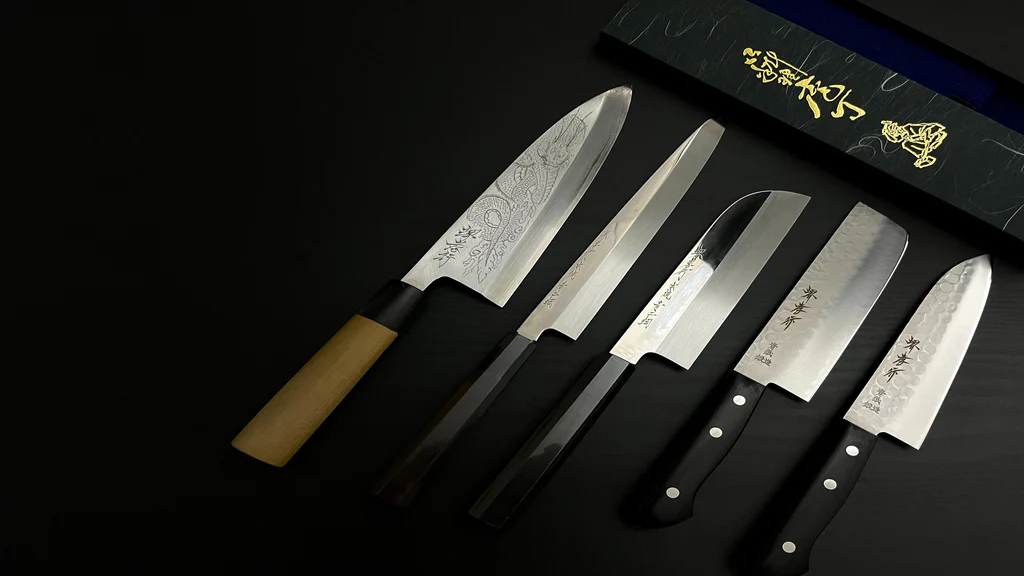
Sakai Takayuki (Source: Internet)
Sakai Takayuki, a venerable knife brand, boasts a rich legacy spanning six centuries in the craft of Japanese knife-making. Nestled in Sakai City, it holds the distinction of being the city’s largest knife manufacturer. Sakai Takayuki offers a diverse range of knives, seamlessly blending the artistry of Western and traditional Japanese styles. The company presents a myriad of styles to cater to discerning customers. Notably, their Damascus steel blades are not only renowned for their stunning aesthetic appeal but also their razor-sharp edges.
| Product lines | Price |
| Grand Chef | $100 to $300 |
| Blue Steel | $100 to $300 |
| White Steel | $100 to $300 |
| Inox | $50 to $150 |
6. Tojiro
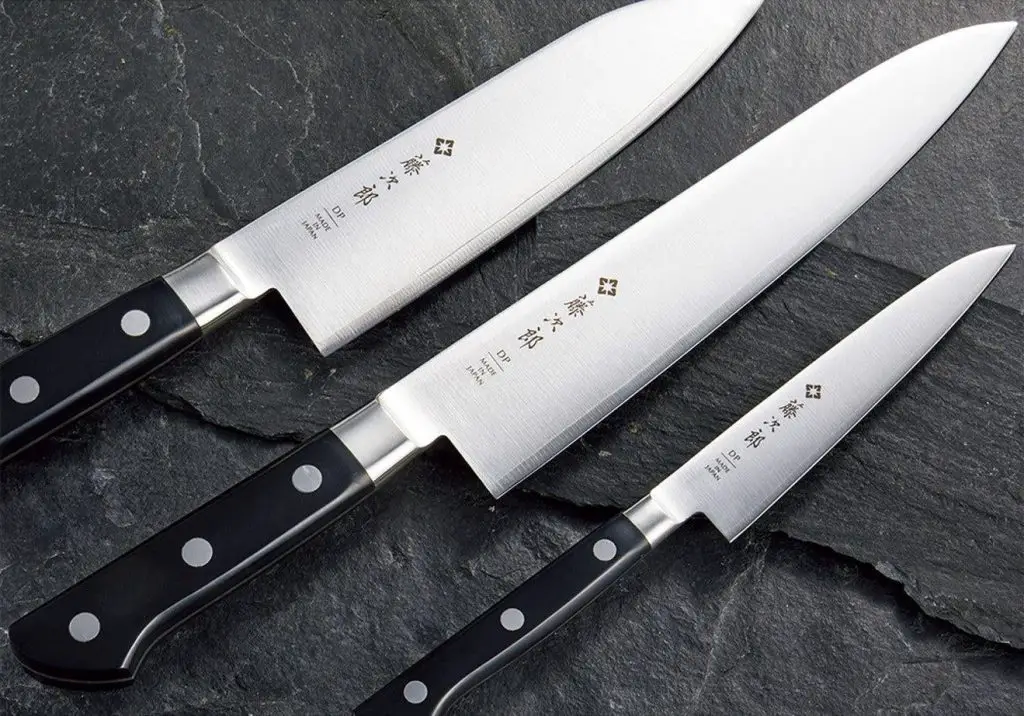
Tojiro Knifes (Source: Internet)
Tojiro, nestled in the heart of Sanjou City within Japan’s Niigata Prefecture, draws its inspiration from the four sacred promises of Mt. Fuji: faith, sincerity, appreciation, and creation. The brand excels in crafting both classic and Western-style knives. Renowned for their affordability, Tojiro’s knives have become a kitchen essential for many home cooks. Simultaneously, their top-tier selections find favor in the hands of professional chefs.
In a bid to provide transparency and a unique experience to their patrons and visitors, Tojiro unveiled the “Open Factory.” True to its name, this facility opens its doors to the public, allowing visitors to witness, hear, and immerse themselves in the rich heritage and knife-making processes of Tojiro.
| Product lines | Price |
| DP | $50 to $200 or more (depending on the knife type and size) |
| F-800 | $30 to $100 or more |
| Shippu | $100 to $300 or more |
7. Nenohi/Nenox
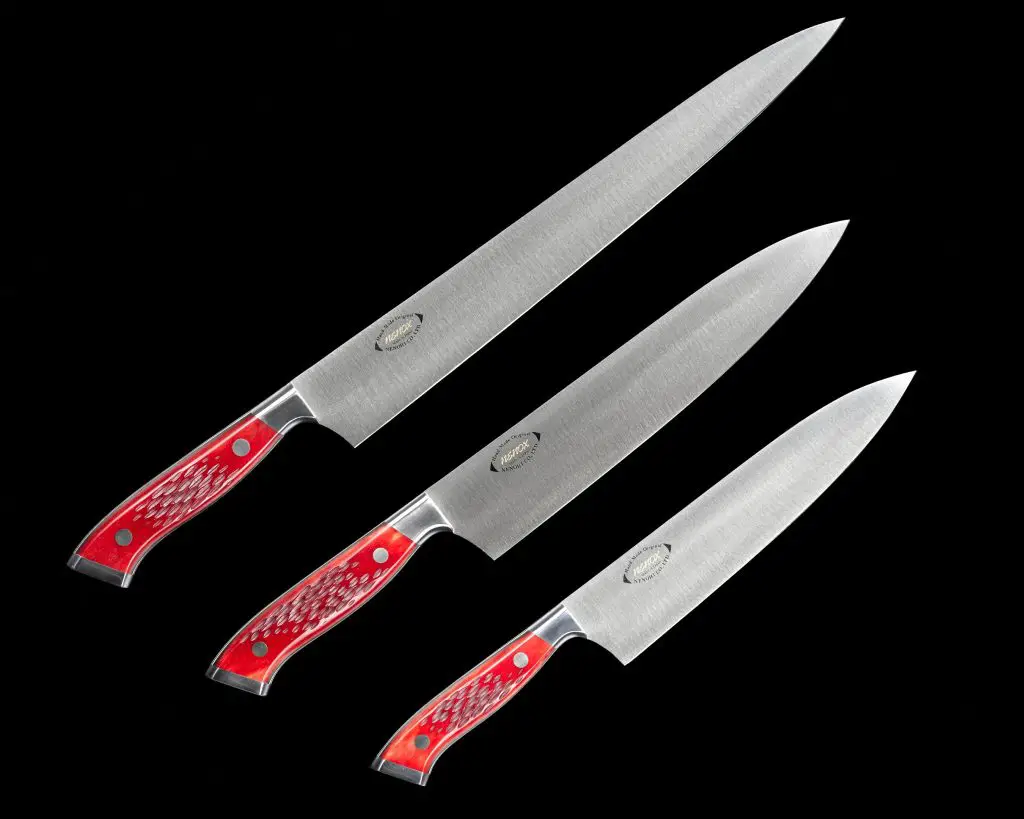
Nenohi/Nenox Knifes (Source: Internet)
Nenohi, established in 1975, specializes in crafting exquisite traditional Japanese knives from premium high-carbon steel. Founded by Norio Sawada, whose ambition was to share his knives with the world, Nenohi embarked on a quest to blend traditional craftsmanship with modern technology. In this pursuit, Sawada collaborated with a Western-style knife specialist.
The name “Nenohi” has become synonymous with top-tier traditional Japanese knives. Among their collection, you’ll find exceptionally crafted blades, some of which are accompanied by exquisite saya covers, exemplifying the brand’s commitment to quality.
Under the Nenox label, Nenohi offers Western-style knives distinguished by razor-sharp, stain-resistant blades. These knives also feature a captivating selection of natural wood and bone handles, adding both beauty and functionality to the art of culinary precision.
| Product lines | Price |
| Nenohi Traditional Japanese Knives | $100 to well over $1,000 or more for custom and high-end models |
| Nenox Western-Style Knives | approximately $100 and goes up to several hundred dollars for premium models. |
8. Miyabi

Miyabi Knifes (Source: Internet)
Miyabi, a Japanese brand, emerges as a fusion of Western admiration for the revered excellence of Japanese craftsmanship and tradition. This initiative took shape when the Zwilling J.A. Henckels company made the decision to acquire a Japanese knife factory, resulting in the birth of a new brand that harmoniously melds cutting-edge German technology with time-honored Japanese knife-making techniques. One of the key distinguishing features of Miyabi knives lies in their cold-tempering methods.
Within the realm of Miyabi knives, it’s essential to grasp the significance of their cold-tempering techniques.
Friodur tempering involves reaching “warmer” tempering temperatures, rendering the knives corrosion-resistant and possessing lower hardness levels. This approach prioritizes durability and ease of maintenance.
Cryodur tempering, on the other hand, targets much lower tempering temperatures, emphasizing extended edge retention and the creation of harder blades. While this results in exceptionally sharp knives, they may be more susceptible to chipping due to their higher blade hardness.
At the pinnacle of Miyabi’s offerings, you’ll find the Miyabi Black 500MCD67 line, representing the epitome of their craftsmanship. While it may come at a premium price, it is a truly magnificent gift for those seeking the finest Japanese knife set.
| Product lines | Price |
| Miyabi Artisan | $150 to $500 or more |
| Miyabi Kaizen | $100 to $300 or more |
| Miyabi Evolution | $70 and go up to around $250 or more |
| Miyabi Birchwood | $200 to $500 or more |
| Miyabi Red Morimoto | $70 to $200 or more |
9. Shun Cutlery
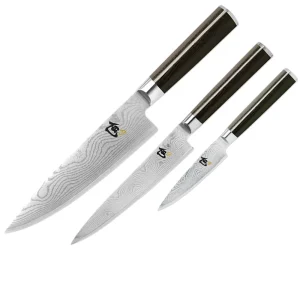
Shun Cutlery Knife (Source: Internet)
The Kai Corporation established this brand with the mission of introducing exquisite Japanese cutlery to both the United States and Europe. By combining contemporary technology with the skill of master knife artisans, they have successfully met the needs and desires of knife enthusiasts, professional chefs, and home cooks alike.
One of Shun’s standout collections is the Classic Blonde series, which continues to capture the hearts of discerning customers. This series of Japanese knives is designed in a Western-style, offering a fusion of traditional craftsmanship and modern functionality.
| Product lines | Prices |
| Shun Classic | $100 to $300 or more |
| Shun Premier | $150 to $400 or more |
| Shun Sora | $30 to $100 or more |
| Shun Kanso | $70 to $200 or more |
You can also like:
- Best Tojiro Knives Review: Are They Worth the Price?
- Tiger Vs Zojirushi Rice Cookers: The Ultimate Showdown
- 10 Best Citizen Watches Review: The Top Picks for Style and Functionality
How to Recognize the Best Japanese Knife Brands
If possible, grasp them before making your selection to gauge their feel; they should seamlessly become an extension of your hand. Ultimately, your personal preferences play a crucial role.
What may seem too large and hefty for one individual could feel too light for another.
Pay heed to the following particulars:
- Blade Length: Chef’s knives commonly come in eight-inch sizes. However, those with smaller hands might find a more comfortable grip with a six-inch version.
- Handle Material and Style: Knife handles can be fashioned from various materials, including wood, metal, or plastic. While aesthetics are important, prioritize functionality.
Seek handles that conform to the contours of your hand, ensuring a secure grip. Opt for a knife that aligns with your needs and culinary style.
- Blade Material: Different steel compositions influence durability and the frequency of sharpening. Carbon steel, for instance, is relatively easy to sharpen but demands more maintenance to stave off rust.
Damascus blades undergo a complex forging process with layered steel, offering both visual allure and top-notch performance. Be sure to check the specific types of steel employed.
Stainless steel blades are known for their durability, corrosion resistance, affordability, and low maintenance requirements. However, lower-grade stainless steel may prove challenging to sharpen.
- Tang: Knives come in various tang types. Full-tang knives extend through the handle, imparting strength and balance. Concealed tangs remain entirely enclosed within the handle.
While partial tangs may be more budget-friendly, they can potentially impact balance and long-term durability.
- Knife Type: Knives are either forged or stamped. Forged knives tend to be thicker and heavier, while stamped knives are thinner, lighter, and more flexible. Stamped knives also tend to be more budget-friendly.
Above all, select a knife that feels comfortable and suits your specific culinary requirements, as it will undoubtedly become an indispensable tool in your kitchen.
FAQs
Q: Which is superior, Shun or Miyabi?
For those seeking durability, the choice is clear: Shun. With Shun, you not only get a long-lasting product but also a lifetime of sharpening and repair services as a bonus. On the other hand, if you desire knives that are exceptionally sharp and crafted using traditional Japanese techniques with a touch of German influence, Miyabi is the way to go. Ultimately, your decision will come down to personal preference and comfort.
Q: What are the advantages of German and Japanese knives, and which one should I choose?
Keep in mind that German knives are renowned for their thickness, durability, and versatility, making them ideal for all-purpose chef tasks. On the other hand, Japanese knives excel in being lightweight and thin, designed specifically for precise slicing and chopping. Armed with this knowledge, you’re now well-equipped to make an informed decision and invest in one of the finest chef’s knives available.
Q: Is it worthwhile to invest in high-priced Japanese knives?
The exceptional quality of the steel used in the construction of Japanese knives is one of the primary factors contributing to their higher price. Japanese knife-makers commonly utilize high-carbon stainless steel, which provides an ideal combination of hardness, edge retention, and corrosion resistance. This meticulous selection of materials ensures that Japanese knives deliver unparalleled performance and durability.
Q: What are the origins of the finest Japanese knives?
During this period, in Seki, Gifu Prefecture, exceptional water, charcoal, and soil were discovered. These valuable resources became instrumental in the production of high-quality Japanese katana swords. Today, Seki has transformed into a renowned “town of cutlery,” renowned for crafting exquisite kitchen knives using traditional Japanese katana techniques.
Q: What is the price range for a high-quality knife in Japan?
The price range can vary from 1,000 yen ($6.81) to over 10,000 yen ($68.12), and even up to 50,000 yen ($340.61), depending on the brand, quality, and size. For professional chefs, investing in a high-quality, durable tool is worth the money in the long run.
Q: What are the benefits of investing in a Japanese knife?
Although Japanese knife types are generally delicate, their exceptionally sharp blades require less frequent sharpening. High-carbon knives maintain their edge much longer compared to softer European knives. Some higher carbon stainless steel knives also have remarkable edge retention capabilities.
Q: Which type of steel is considered the most superior for Japanese knives?
Aogami Super (Blue Super Steel) is widely regarded as the finest Yasugi steel due to its exceptional hardness and resistance to abrasion. The carbon and chromium content has been further enhanced, resulting in superior performance. It’s worth noting that the inclusion of tungsten and vanadium makes Aogami Super more challenging to sharpen.
Q: Is purchasing a Japanese knife more affordable than buying it in Japan?
Undoubtedly, the optimal approach to acquiring a Japanese knife is by purchasing it in Japan. Not only does this often result in a more cost-effective option, but it also ensures the assurance of top-notch quality. Procuring an authentic traditional Japanese knife from overseas can be quite challenging since the exclusive realm of genuine traditional craftsmen primarily lies in Sakai, and their distribution is primarily limited to the domestic market.
Conclusion
The Japanese kitchen knife is a very special and valuable tool for any kitchen. Not only can these blades be incredibly sharp, but they come in different shapes and sizes to accommodate every user’s needs.
With all of the choices you have when it comes to finding the best Japanese knife brands, there is something for everyone no matter their budget or preferences. Investing in a quality Japanese knife will not only guarantee that you have a practical tool, but it will also last you through years of use due to its superior construction.

